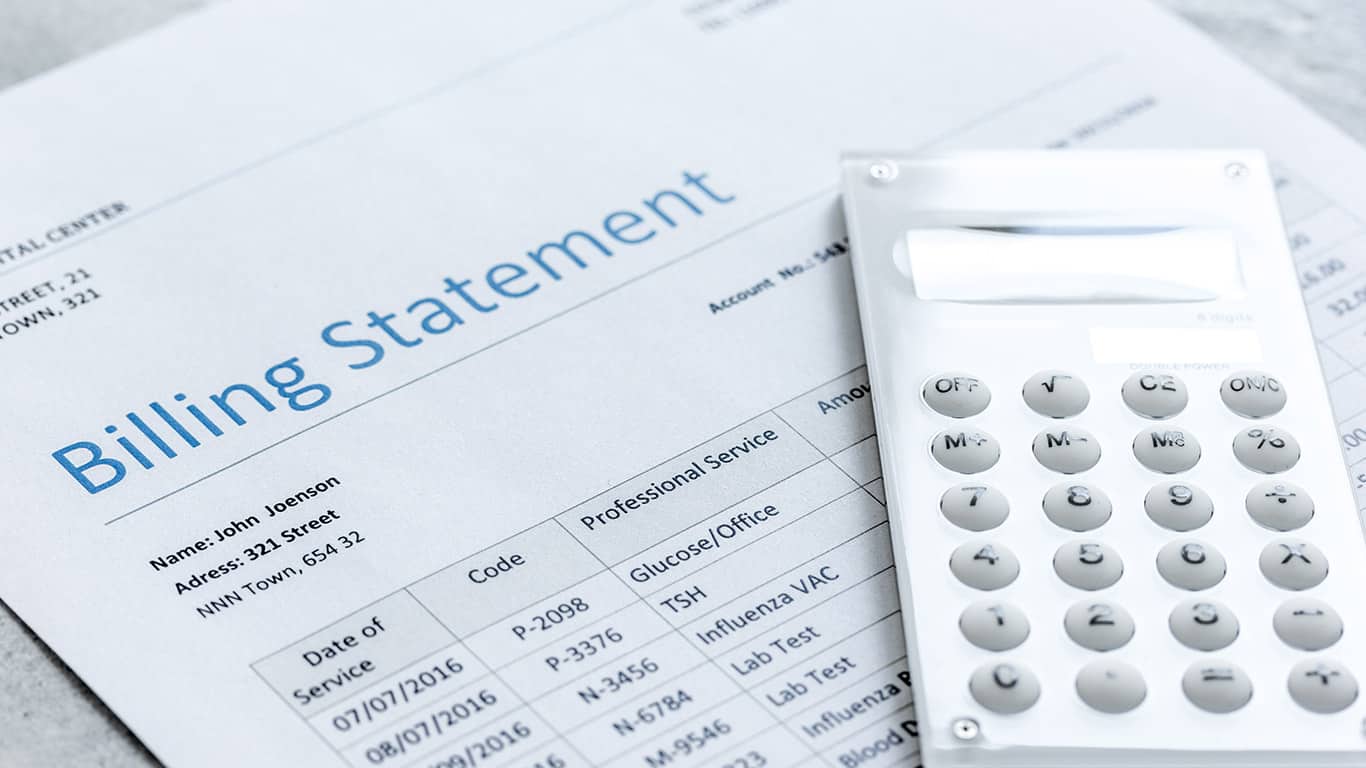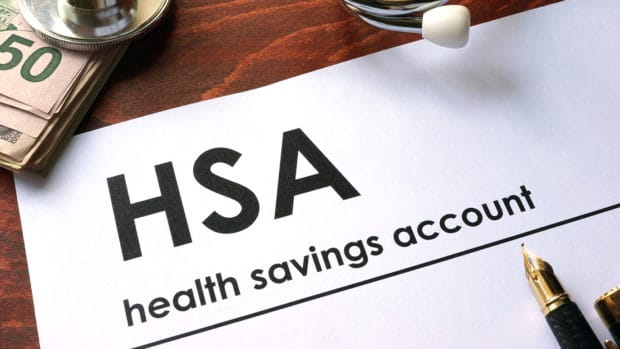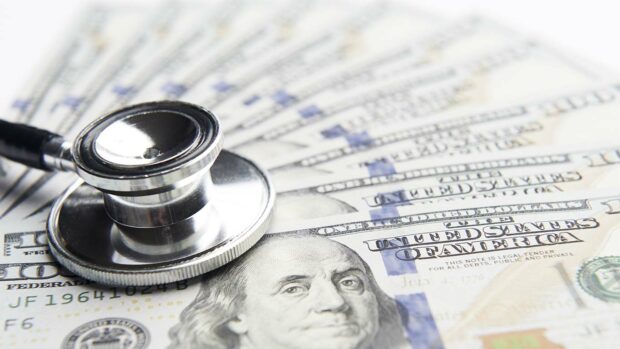
Around 41% of adults in the U.S. owe a medical debt, according to a recent Kaiser Family Foundation (KFF) survey. Of that number, roughly 11 million owe at least $2,000 in medical bills, and around three million owe more than $10,000.
The same survey found that of those who owed a $2,000 medical bill, 32 percent weren’t able to pay it. And more than half of those surveyed with a $6,000 medical bill said they couldn’t afford to pay the debt. That’s a lot of worry on the minds of people just trying to take care of their and their family’s health.
The stress of unpaid medical debt can also take a toll on your mental health, according to a study by AIMS Public Health. The AIMS study found that people with medical bills are three times as likely to have depression, anxiety, and stress over their medical debt.
All that pressure might make you want to take to your bed and give up. But people pay off huge medical bills every day, so don’t assume paying off medical debt is beyond your reach.
Here are the steps you should take to make sure you can pay off what you owe and only what you owe.
Table of Contents
Take a look at the bill
Before anything, ask for an itemized bill and verify the information is correct.
Is that your name? Do the dates match? Was that procedure performed? Are there duplicate charges? Roughly, 80% of medical bills contain at least one error, according to the personal finance site NerdWallet. Don’t assume a mistake wasn’t made.
Find out what insurance will cover
If you have insurance, the hospital or healthcare provider will file a claim with the insurance company. It’ll then send you an Explanation of Benefits (EOB) outlining what qualifies for reimbursement. Compare that to your medical bill before paying anything.
Health insurance companies make mistakes, too. You can call to ensure the claim is correct.
Compare medical bills with EOBs
Your insurance provider will send what’s known as an explanation of benefits (EOB) for every medical claim submitted. At first glance, the EOB looks like a bill, but that’s not its purpose.
The EOB shows the service provided, how much your healthcare provider bills for that service, and the medical billing code. Along with that information, the EOB also shows the amount your insurance company will reimburse and the amount under “patient responsibility” that you owe the doctor or hospital.
Save all your EOBs in a file so you can compare the “patient responsibility” amount to the amount owed shown on the bill you receive from your healthcare provider. Look closely at the dates on the EOB and the medical bill. Sometimes, medical billing offices send a bill before the insurance company mails the EOB, which can result in an overpayment.
If you’ve paid a medical bill, double-check the amount billed and paid against the EOBs to make sure you didn’t pay too much. If you did, contact the doctor’s office or hospital, explain the situation, and ask for a refund for the overpayment.
Find out: How to Appeal a Health Insurance Claim Denial
Price research
After confirming the information in your bill and EOB, do research on the pricing.
You can search through health insurance claim databases like Healthcare Bluebook or FAIR Health for prices in your area. Then compare prices on the Centers for Medicare and Medicaid Services website by using the billing code. Make sure you are only paying a fair amount for the services you receive.
Negotiate a payment plan or settlement
When facing a large hospital bill, don’t automatically assume there’s no room for negotiating. You may be able to set up a payment plan with the billing department for monthly payments you can afford. Settling the debt for a smaller amount could be another option.
Hospitals and other healthcare providers want to get rid of your medical debt just as much as you do. That way, they don’t have to keep track of a payment plan or hound you when your payments are late. So, don’t overlook asking them to settle the debt for a lower amount.
Contact the billing department and tell them you can pay a smaller amount right away if they will settle. For example, if you owe $5,000, ask if they will accept $3,000, or even $2,500 to settle the debt immediately. Then do your best to scrounge up the money, whether that means borrowing from a family member or putting the debt on a low-interest credit card.
They may take you up on your offer or at least counter with an amount smaller than $5,000 to settle the debt. If negotiating with a hospital seems intimidating, don’t be afraid to take the chance. You have nothing to lose, and you may be able to pay off the medical bill sooner.
Read: Strategies for Negotiating with the Hospital Billing Department
Hire a medical billing advocate
If you’re facing a large amount of medical debt, you’re probably staring down a stack of EOBs and confusing medical bills. Hiring a medical billing advocate if your medical debt is more than a few thousand dollars could be a good move and help you pay off debt faster.
A medical billing advocate knows what to look for in EOBs and medical bills to see whether you’re being overbilled or you overpaid a bill. Medical billing advocates are also experienced in negotiating medical bill settlements and appealing denied insurance claims.
Medical billing advocates typically charge a percentage of the amount they save you on medical bills. Some charge an hourly rate, ranging anywhere from $75 to $350 an hour. Hiring a medical advocate is only worth it if their fees cost less than your medical bills.
However, saving yourself the stress of poring over bills and EOBs, negotiating and being transferred to four different insurance departments, only to have the call drop when you finally reach the right person, may be well worth the medical billing advocate’s fee.
Read: Reasons You May Want to Hire a Medical Billing Advocate
Use a credit card
When you pay with plastic, you’re typically moving the debt from a no-interest account to one where you could pay a high interest rate.
The federal Consumer Financial Protection Bureau issued new regulations barring medical debts from American credit reports (the rule will go into effect 60 days from January 7, 2025). With the new ruling, a better option may be to work out a payment plan with the billing office instead. Still there are a few circumstances where it may make sense to trade one debt for another: when it saves you money.
You can pay it off right away
Using a rewards credit card to pay a small medical bill can be a strategic move if you can pay off the entire balance immediately. This allows you to earn valuable rewards points, miles, or cash back on an otherwise non-rewardable expense. However, this strategy is only advisable if you have the discipline to pay off the balance in full and on time, avoiding accruing high interest charges that would quickly negate any rewards earned.
You use a card with a 0% APR
If you must pay a medical bill with a credit card and have good to excellent credit, consider applying for a new credit card that has a 0% interest rate for a year or longer. Many medical credit cards offer a six to 12-month period of zero percent interest. Add up the payments. If you can afford that balance by the time that window closes it’s worth it. If not, you’ll get stuck paying the deferred interest.
Be careful, though. Create a budget to pay the debt off before the promotional period ends, or you could pay more in the long run when the interest rate jumps.
You pay off the bill with a credit card that has a sign-up bonus
If you’re good at managing credit card debt and have good to excellent credit, another option could be applying for a credit card that offers a sign-up bonus once you spend a certain amount. For example, a bonus of $200 if you spend $1,500 within 90 days after opening the account.
If you know you can pay the balance off soon, you can use the sign-up bonus to pay a lower amount on the bill. While you’re at it, choose a card with a 0% interest rate for a year or longer. Then make sure you pay off the balance before the promotional period ends to avoid paying more interest than the amount you received as a sign-up bonus.
You can negotiate a lower lump sum settlement
What if you ask the billing department if you can settle your $2,500 debt today with a reasonable lump sum credit card payment – $2,000 or $1,800, for example? That person you’ve been arguing with for months may jump at the chance to permanently file away you and your account.
Proceed with caution, however. Make sure you create a plan to pay the credit card debt off as soon as possible and stick to your goal to minimize interest payments.
Find out: Everything You Need to Know About Medical Debt Settlement
Your credit utilization rate is low
Charging a large medical bill to your credit card isn’t a smart move if your credit utilization rate – the ratio of overall revolving credit debt to your available credit – is already high. That’s because your credit utilization rate accounts for around 30% of your credit score, and keeping your credit utilization rate lower than 30% is better for your credit score.
Make sure your credit utilization rate is well under 30% before paying a large medical bill with a credit card. Also, do your best to pay off the balance quickly and use a 0% APR credit card if you can.











